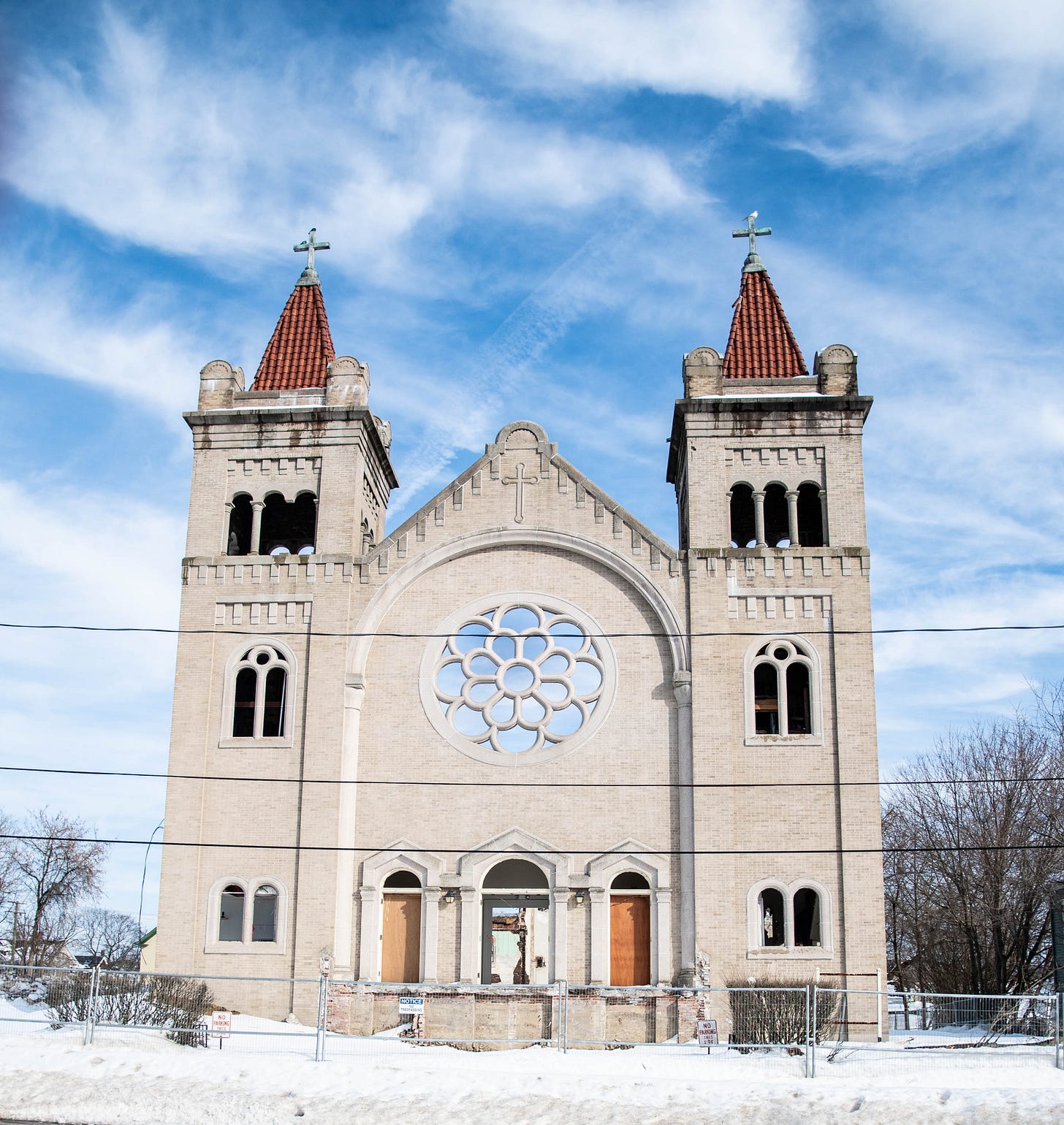Facade of demolished church in Dover, NH (2017)
In this new age of extreme individualism, we are abandoning religion in order for each of us to pursue independent paths, locked in the iron grip of consumerism. This isn’t going to work because, as William Butler Yeats warned in his iconic poem The Second Coming, “the center can’t hold.”1
I’m going to make a surprising – and perhaps rash – argument for a person like me who doesn’t go to church: I believe that our root problem is the demise of religion as a vital institution in America.
While writing this piece, I encountered an unlikely ally in Russell Moore, Editor-in-Chief of Christianity Today. In his book Losing our Religon, he has similar worries about the fate of his faith community as millions of younger Americans leave his church: “Can American Christianity survive?”2
Undeniably, our vibrant religious myths have withered way, opening up a dangerous void which, I fear, will be replaced by Yeat’s approaching ogre: “And what rough beast, its hour come round at last, Slouches toward Bethlehem to be born?”3
As a former sociology graduate student, I am aware that religion has been an indispensable part of every human society in history. However—and this is the controversial part—I hope to demonstrate why every human in history has lived in a myth, not reality.
We can easily see this truth when accepting the strange myths that primitive tribes practice, but challenged to acknowledge that our current cultural myth is science and rationality. As the old saying goes, if you are a fish, you don’t know you are swimming in water.
If you are willing to accept my premise, at least for the sake of reading this essay, I want to explore alternative myths that might be capable of replacing religion’s former role. I have adapted some of these from Bernardo Kastrup’s book More Than Allegory: On Religious Myth, Truth, and Belief4 and the Academy of Ideas5.
Consumerism: Consumerism is an all-encompassing myth that overvalues the accumulation of wealth and material goods. People who are successful discover they are no happier and often more depressed than before; meanwhile, we are destroying our environment.
Nationalism: According to Kastrup, “Those who look at the world according to the statist myth view all social problems as requiring political solutions…. But the more people in a society that adhere to this myth, the closer society moves to totalitarianism.”6 A tragic consequence that is taking root in our country as we speak!.
Science and rationality. Kastrup suggests that one of the primary reasons that religious myths are being abandoned is because we have become “too literal, too rational, and too scientific.” Viewed through the prism of science, many of religion’s literal claims may look absurd, yet symbolize a greater transcendent truth.
Transcendental myth: We know when we are living a transcendental myth because it will resonate at the core of our being, changing a banal existence into one of genuine meaning. According to Kastrup, such a myth can anchor our experiences in a larger, more profound reality, “offering purpose and direction amid life’s inevitable challenges and suffering.
Transcendental myths can serve as a unifying bond in a culturally disparate country..
Carl Jung wrote, “The religious myth is one of man’s greatest and most significant achievements, giving him the security and inner strength not to be crushed by the monstrousness of the universe.”
According to Kastrup, language is too limited to convey profound truths about human life and the universe. Religion goes beyond words to connect with what Jung called the unconscious mind, the arbiter of our primal needs.
In conclusion, if one examines a myth from the standpoint of cold rationality, Donald Trump’s transactional business model makes sense—but only to machines, robots, and ultra-rich people like Elon Musk. Meanwhile, it is an abomination to all of us regular folks whose highest duty is to honor our sacred bonds to family, friends, and community—not some sleazy transactional deal.
xxx
Photo Credit of church: CC Jean Stimmell
Footnotes:
1 https://www.litcharts.com/poetry/william-butler-yeats/the-second-coming
2 https:
//www.amazon.com/Losing-Our-Religion-Evangelical-America/dp/0593541782
3 Ibid.
4 Kastrup, Bernardo. More Than Allegory: On Religious Myth, Truth And Belief \
5
6 Ibid
xxx



















